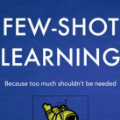Large language models (LLMs) have demonstrated impressive capabilities for many coding tasks, including summarization, translation, completion, and code generation. However, detecting code vulnerabilities remains a challenging task for LLMs. An effective way to improve LLM performance is in-context learning (ICL) - providing few-shot examples similar to the query, along with correct answers, can improve an LLM's ability to generate correct solutions. However, choosing the few-shot examples appropriately is crucial to improving model performance. In this paper, we explore two criteria for choosing few-shot examples for ICL used in the code vulnerability detection task. The first criterion considers if the LLM (consistently) makes a mistake or not on a sample with the intuition that LLM performance on a sample is informative about its usefulness as a few-shot example. The other criterion considers similarity of the examples with the program under query and chooses few-shot examples based on the $k$-nearest neighbors to the given sample. We perform evaluations to determine the benefits of these criteria individually as well as under various combinations, using open-source models on multiple datasets.
翻译:暂无翻译




